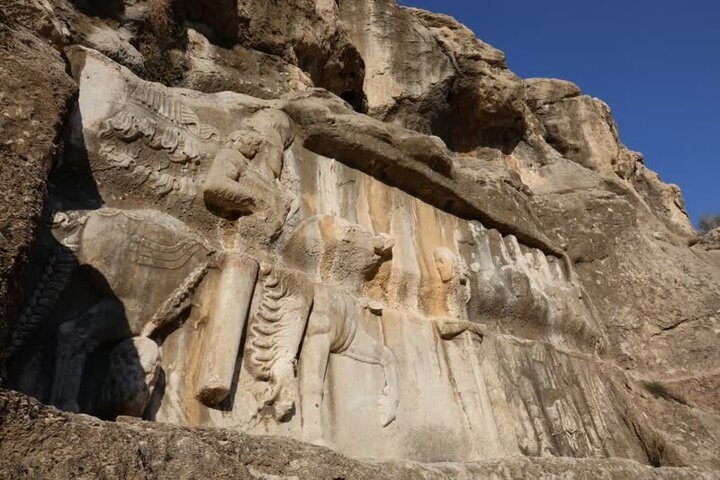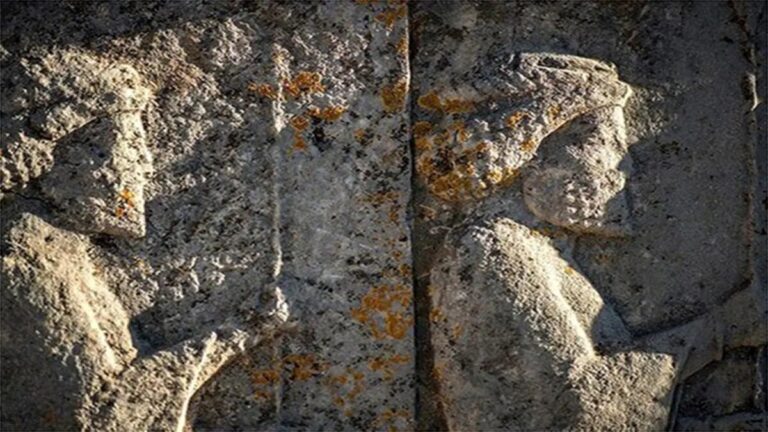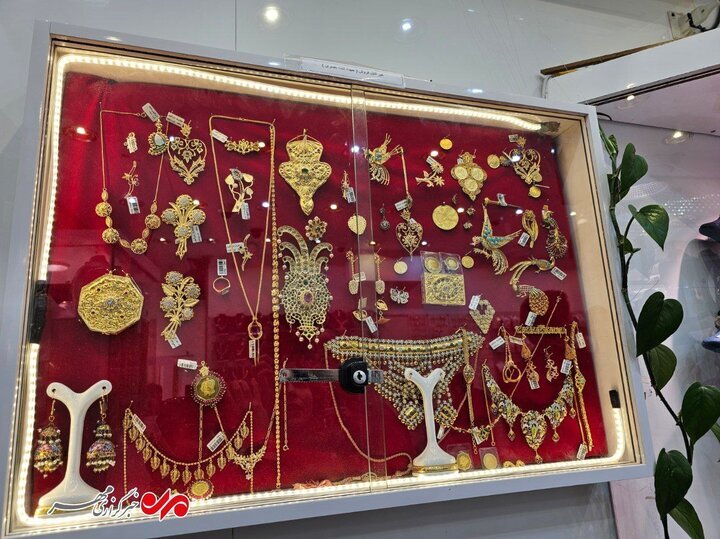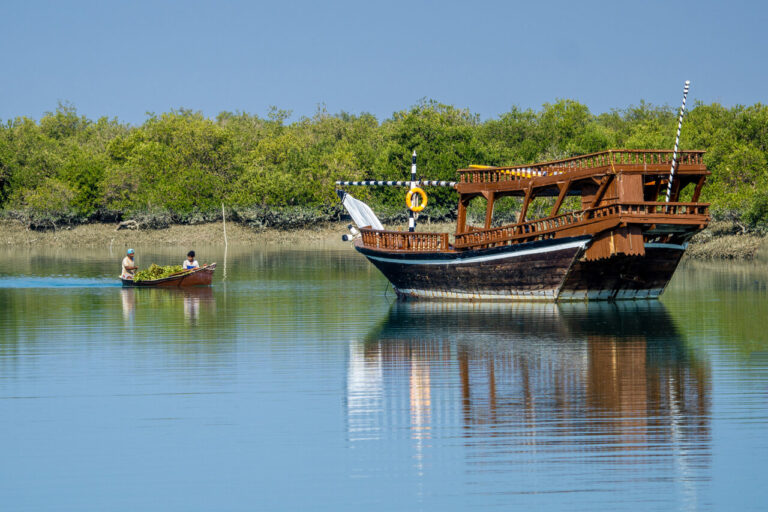Emergency Restoration Successfully Revives Sasanian Rock Relief of King Bahram II
TEHRAN – The emergency restoration of a Sasanian rock relief of Bahram II at Tang-e Chogan, located in Bishapur, Kazerun, Fars province, has recently reached completion. This significant project underscores the importance of preserving Iran’s rich cultural heritage, particularly the stunning Sassanian art that reflects the grandeur of the era.
According to Mohammad Sabet-Eqlidi, the provincial tourism chief, the restoration was prompted by the collapse of a section of the relief known as the “Pashe Paran,” which resembles a fly swatter. A team of stone restoration experts was dispatched to Kazerun to assess and rectify the damage. “Documentation and restoration efforts began promptly,” Eqlidi noted.
The damaged section of the relief, which had been inaccurately referred to in media reports as a mace, was originally destroyed in 2011 by an individual seeking treasure. This unfortunate incident resulted in the relief being fragmented into numerous small and large pieces.
“Initial restoration efforts were conducted by specialists from Persepolis stone restoration at that time. However, due to natural factors, the section collapsed again and required further restoration,” Eqlidi explained.
During the recent restoration project, modern conservation techniques and new materials were employed to clean, reassemble, and restore the relief effectively. These advancements are crucial for preserving such a valuable piece of history.
The bas-relief is part of a series of carvings that are considered among the most important from the Sassanid era. These reliefs depict significant scenes, including the victories of Iranian monarchs over Roman emperors. The site features six reliefs, organized as follows:
- Two reliefs on the right side of the entrance
- Four reliefs on the left side
Notably, three of these reliefs illustrate the victory of Shapur I over a Roman emperor. Additionally, Eqlidi mentioned that other reliefs at the site portray the triumphs of Sassanian kings over rebels and enemies, alongside symbolic scenes such as:
- The bestowal of the divine ring of power by Ahura Mazda
- The subjugation of Ahriman under a galloping horse
The newly restored relief is particularly fascinating as it depicts the moment when the king receives a delegation of Arabs. This relief stands out as it is the only Sasanian monument that represents an embassy. The envoys are escorted to the king by a Persian nobleman wielding a long sword.
Bahram II, the fifth Sasanian King of Iran, was the son and direct successor of Bahram I (r. 271–274). The Sassanid era holds immense significance in Iranian history, marking a period where Persian art and architecture experienced a remarkable renaissance. Architectural feats from this era often showcased grandiose dimensions, evident in the palaces at Ctesiphon, Firuzabad, and Sarvestan, which are among the highlights of this historical period.
In 2018, an ensemble of Sassanian historical cities in southern Iran, known as the “Sassanid Archaeological Landscape of Fars Region,” was designated as a UNESCO World Heritage site. This ensemble encompasses eight archaeological sites distributed across three geographical areas: Firuzabad, Bishapur, and Sarvestan.
The significance of this World Heritage site lies in its reflection of the optimized utilization of natural topography, showcasing the profound influence of Achaemenid and Parthian cultural traditions. Additionally, the Roman art that permeated this era left a lasting impact on the architecture and artistic styles that emerged during the Islamic period.
As restoration efforts continue to breathe new life into these invaluable pieces of history, it is essential to recognize the role they play in understanding Iran’s rich cultural narrative. The restoration of the relief not only preserves the artistry of the Sassanian era but also enhances our appreciation for the historical events that shaped the region.
In conclusion, the successful restoration of the Sasanian rock relief of Bahram II is a testament to the dedication and expertise of the restoration team. This project not only safeguards a vital piece of Iran’s heritage but also enriches the narrative of the Sassanid era, ensuring that future generations can appreciate the splendor and significance of this remarkable time in history.





